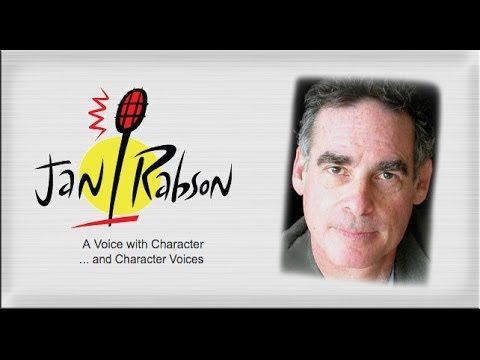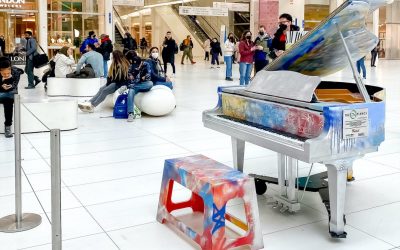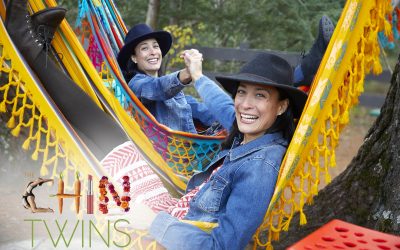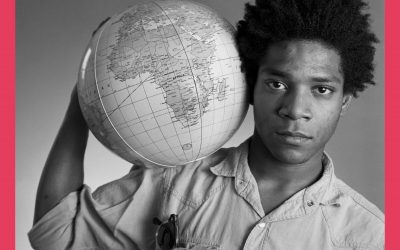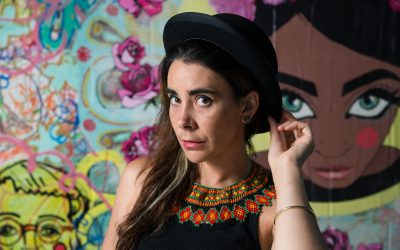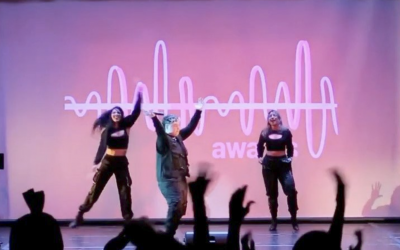I’m almost certain that every reader of Downtown Magazine could name at least one movie that Tom Cruise appeared in. The same goes for Arnold Schwarzenegger, Julia Roberts, Eddie Murphy and other stars with three decades of leading roles. However, the majority of readers are unlikely to be able to do the same for Mel Blanc, who had starring roles for over sixty years; Bugs Bunny and Barney Rubble were two of the voices he provided. Or even Don LaFontaine, whose acting you probably experienced every single day you watched television within the past few decades; he pioneered the “in a world…” movie trailer, which led to countless announcing and commercial gigs.
After learning about people like Mel Blanc and Don LaFontaine, I quickly realized that they are plenty of steadily-working actors with careers to envy. One such person is Jan Rabson. Jan did voice work on just about every animated hit you can think of from the past few decades, like Inside Out, Minions, all three Toy Story movies, Up, Cars, Cloudy With A Chance Of Meatballs, and Wall-E. Yet beyond his decades of major credits in the animation world, Jan has also had plenty of on-screen roles, including appearances on The Tonight Show, Baywatch, Pee-Wee’s Big Adventure, Knight Rider and Fatal Attraction. And that is just the start of where he has worked.
Although Jon DiMaggio recently made a documentary about voice-over artists called I Know That Voice and Lake Bell co-wrote, directed and starred in a v/o-themed feature called “In A World…,” the world of voice actors is still something of a mystery to most people. What do these people look like? Where do casting people find them? How did they realize that they had such great voices? Is it really possible to make a living as an actor without being on-camera?
Fortunately, Jan was willing to speak with me about these topics and plenty more. As a native New Yorker who relocated to Los Angeles with a simple dream, and later opted to relocate to British Columbia, he has quite a unique story. Voice-over work wasn’t initially the career goal, yet that’s where he eventually wound up. Ultimately, Jan was generous with his time, and beyond his acting, I recommend everyone to check out his new app, History Speaking.
You have worked extensively as a voice-over artist, have done a lot of on-screen acting, have been a writer, a director, a producer, and I believe you have other businesses going on. When someone asks you what you do for a living, how do you usually respond?
Jan Rabson: When I used to live in L.A., I told people I was a driver. I was working a lot, but driving from studio to studio all day to work. The traffic was horrendous; I spent more time in the car than the studio. Now I tell people I’m semi-retired. I’m actually very shy, very uncomfortable when people ask me to “do a voice,” so sometimes I just say “actor” and people assume I work as a waiter.
Do you have a professional role or accomplishment you’re most proud of?
J: I would say my years on the Tonight Show were a part of Americana; seeing people watching seagulls shouting, “mine, mine.” And then when I start to think about it, they were mostly all fun and work I can be proud of. I’ve been fortunate enough to work on many of the top shows and movies, as well as with some of the most creative people in the world, in the last four decades. I pinch myself sometimes.
You worked a lot on The Tonight Show in the Johnny Carson era. A lot of people have their minds made up on Johnny the off-screen person due to the movie The Late Shift and the more recent American Masters documentary. What do you wish more people knew about the host or even the show itself?
J: The truth is, I didn’t know Johnny very well. I knew the head writers and the crew, but not Johnny. He was, obviously, extremely talented and a very nice man. The head writers, [Andrew] Nicholls and [Darrell] Vickers, recommended me to him, he saw a comedy commercial I had running and said, “that’s the guy.” I was fortunate to not only do many on-camera skits but also a lot of the voice-overs, everything from “love radar guns” to sheiks and cash machines. We would rehearse, he was nice to me — no complaints. He would always say before each sketch, “no ad-libs.” I would always ad-lib. I always got hired again, so I had to assume they were okay. He was a master at the craft. The last sketch we did, before he retired, I could see he was tired of going out there. It was a great script, everything screwed up, as usual, he was brilliant. But after that I would get hired to come in, we’d rehearse, and he would find a reason not to do the sketch. That was it.
Was it always your plan to be an actor that specialized in voice-overs? Did people compliment your speaking voice a lot when you were growing up?
J: I had to laugh. I always thought I would be a Danny Kaye kind of guy. Movies, lots of voices, etc. I did some on-camera but I got tired of sitting in trailers, auditioning with hundreds, etc. At the same time, I was trying to get into animation, which was always a love of mine since I was a kid. An agent told me I should try commercial voice-overs — I did, and frankly, made a good portion of my living from commercials and announcing.
Having grown up in New York on Long Island, what was it that brought you out west to Los Angeles?
J: Long Island was never comfortable for me. After being an art major at college, I realized the art world wasn’t for me, I wanted something more dependable, more stable. I wanted to be an actor (laughs). I had been writing to Mel Blanc [voice-over artist behind Porky Pig, Daffy Duck, and Yosemite Sam, among others] since I was 16, but that’s a whole other story. I was working for Eastern Airlines, standing on the runway at LaGuardia Airport in -40 degree wind chill, and decided if I was going to try to be an actor, I’d rather starve where it’s warm. Off to L.A. I went, not knowing a soul.
After many years out west, what influenced your move to British Columbia?
J: There were many, many reasons. I had never felt entirely comfortable in L.A. I always lived in the Hills or away from the “action.” At this point, I was married and had two young boys, I didn’t want to raise them in L.A. After the eight-month strike, the business changed dramatically. The traffic in L.A. was getting exponentially worse. My wife was having health issues due to the smog. The internet changed the dynamics of voice-overs. We had a recording studio in L.A. and I knew we could run it from afar. I was tired of “the grind” and wanted to live in the country. We live on a small island. My home is surrounded by woods, wonderful neighbors, and I have my own beach. I couldn’t get that in L.A. Etc, etc, etc…
Your wife has worked extensively in casting and as a director for voice-overs. Is that how you two first met?
J: Cindy Akers, her professional name, was working at Bob Lloyd’s The Voicecaster [agency]. They mostly cast commercials and I was doing very well out of there. I was very afraid of dating Cindy because I didn’t want to screw it up. Luckily, it all worked out well. Cindy does a lot of work, mostly in animation now. I don’t get any real “leg up” on jobs as it’s always ultimately the producer’s decision. It’s always fun when we get to work together. This week was unusual, we did a two-day voice-over workshop and two shows of a cartoon in Vancouver together.
What do you think the biggest misconception is about the voicework field or even in working as a voice-over actor?
J: I’d say two things. One, that if you have a good voice you can just jump in and start working. It’s a highly-competitive field and has to be an almost full-time pursuit. And two, it’s not the voice, it’s the acting.
For someone who wants to start a career in the voice-over field in 2015, what are the initial steps that you would recommend taking? Is taking a class or workshop always essential?
J: If you are an outright brilliant superstar, no class. Otherwise, most people have no concept of how difficult and competitive the voice-over field is. The odds against them are astronomical. I would say to take workshops, get a voice-over workout group together, perform, do improv, network. But before you do a tape, make sure you are 100 percent ready & 1000 percent competitive.
What can you tell me about your recently-launched business History Speaking? Are there any goals you’re aiming to accomplish with it?
J: History Speaking is an app for smart phones. Any statue, art piece, or landmark can have a QR code on it. Just swipe your phone and you get a phone call back from anyone from George Washington to the San Francisco Bridge. We are hoping to have QR codes all across the U.S. and Canada, it’s a great way to educate people and learn about history in a fun way. I do all the writing and the voices, I’m having a ball.
Is there a field you haven’t yet worked in which you still have your eye on?
J: I am actually quite content these days. I was never a star but I was a solidly working actor. I’m proud of that. I was never rich but I managed to move to an oceanfront house. I’ve done a lot of things in my 61 years and I’m not through. I’d like to write my memoirs, if for nothing else, so my kids can know a little more about their dad.
When you’re not working, what do you like to do with yourself?
J: The truth is, I have a vague line between work and play. I love what I do. I pretend to be other people, animals and inanimate objects. I have fun. I write. I love to hang with my boys and my wife. I love to travel. I have a few different businesses. I am making a kinetic sculpture out of metal and wood. I just built a room above my office for my 6’ x 12’ snooker table. I am a sumo wrestling fan. I love to read — books! — and I love to kayak.
Finally, Jan, last words for the kids?
J: Keep moving forward. Enjoy your life. Don’t let embarrassment, other people’s opinions, or sometimes even logic, get in your way. After reality struck, I set a goal for myself: to make enough money from the SAG union to get the medical insurance. I’ve done that, and more. The odds were against me, if I were talking to the young me I’d say, “Are you crazy? Do you know how tough it is to make a living out there?” And the truth is, what do I know?
-by Darren Paltrowitz

